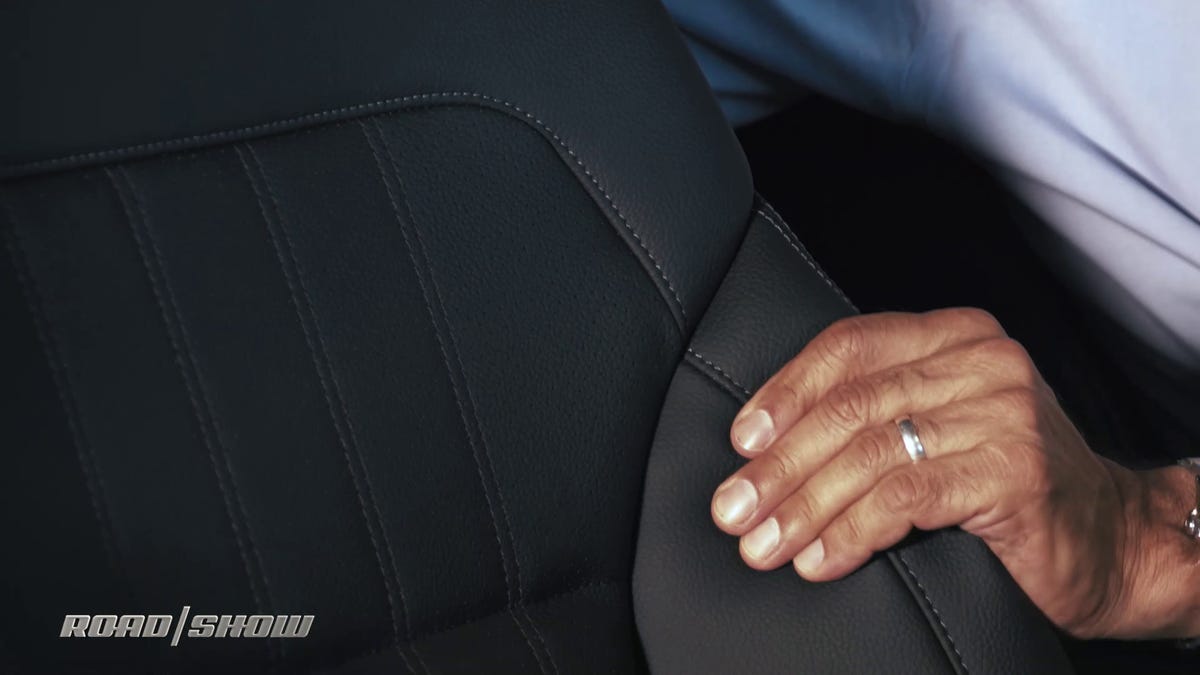What will vanish first: Leather interiors or combustion engines?
Mini, Toyota, Jaguar and Tesla move car upholstery into the future.

Following Mini's announcement that its next generation of cars will eschew leather for vegan interiors and news of a vegan cabin in the North American Utility of the Year, the Ford Mustang Mach-E, we have a bona fide shift on our hands. Mini joins tech-forward premium car brands Mercedes, Tesla, Volvo, Jaguar, Volkswagen, Bentley and Land Rover as they move to standard or optional vegan leathers; seats covered in hides are starting to seem quaint at best. While we typically associate "vegan" with a diet, the ethic also speaks to upholstery in cars.
Read: 10 essential kitchen tools for a vegan kitchen in 2019
At Mercedes this trend is nothing new. Shortly after the Second World War, it offered artificial "Kunstleder" upholstery on cars like this 180 Ponton with a snazzy red cabin as the company returned to car manufacturing in a resource-strapped environment. Today the descendant of that material is known as MB-Tex and is found on many Mercedes cars. Cartelligent says 55% of the Mercedes vehicles it leases are chosen with MB-Tex.
Mercedes MB-Tex may be the grandparent of today's explosion in vegan auto interiors. Its supple texture, deep grain and genuine stitching all explain why so many of this company's premium cars are ordered this way.
Unless you're seeking the smell of leather (which, like "new car smell," is just a bunch of off-gassing manufacturing chemicals), MB-Tex will probably meet or exceed your expectations for a "leather" interior. It's been one of my favorite auto upholsteries for years, and suffers less from the scalding in the summer/freezing in the winter experience you can get with animal leather.
Lexus probed the vegan trend early, making a few bespoke vegan Lexus models in 2006 at the request of Paul McCartney, whose tour it was sponsoring. But it would be over a decade later before the industry found interest among a wider base of car buyers, particularly affluent ones.
Tesla has been quietly dropping leather from its upholstery options, with the Model 3 and the Model Y already vegan only. Volvo's Polestar 2 comes standard with vegan upholstery and recycled wood, though leather will still be an option. As of 2020, the Range Rover Evoque, Velar and Jaguar I-Pace SUVs will all offer vegan interiors. And the entire Toyota Prius line offers Sof-Tex synthetic leather or synthetic cloth upholstery to compliment its sustainable credentials.
The Tesla Model 3 is a trailblazer in the move toward vegan car interiors. Leather is not an option, even on the steering wheel which was the hardest part to switch over.
The Porsche Taycan offers a microfiber vegan upholstery called "Race-Tex" that presents as leather but which uses recycled polyester and generates 80% less CO2 in its production. And that's where we find the first key to why some carmakers are going vegan: They're under huge pressure, especially in the EU, to lower the carbon footprint of their products and it doesn't all come from tailpipes.
Global animal agriculture, including leather production, creates more CO2 than cars (though that's the reverse in the US because we have some many cars per capita).
Leather creates a long and nasty chain of CO2 emissions and chemical waste. Averting that with a cleaner material would merely be altruistic on the part of carmakers but for an interesting provision in the EU's transport regulations that gives them credit for reducing CO2 emissions through so-called "eco-innovations" that can't be measured as part of road tests.
Add to that three more benefits of non-leather "leather" upholstery that automakers frequently cite:
- It's lighter in weight, which is a huge factor in all aspects of auto design.
- There's a lower cost of production, as many of these materials are made from low-cost or recycled fibers.
- The better use and reuse cycle allows them to hit product-dismantling goals.
I know many of you will push back at the idea, thinking it springs from a bunch of sanctimonious change agents who want to take away your leather, manual transmission and combustion engine. But all three of those are going away because they aren't the best way to engineer a car anymore. When you get a chance to try out a vegan leather car interior, sit without prejudice and see what you think.

